Creating a Built-in Hutch – Kitchen Entry Makeover Day 3
After building and installing the base Entry Cabinet, I took a hard look at the overall area. I decided to tear out the planks on the side walls and create a built-in hutch out of the cabinets I’d already built and installed.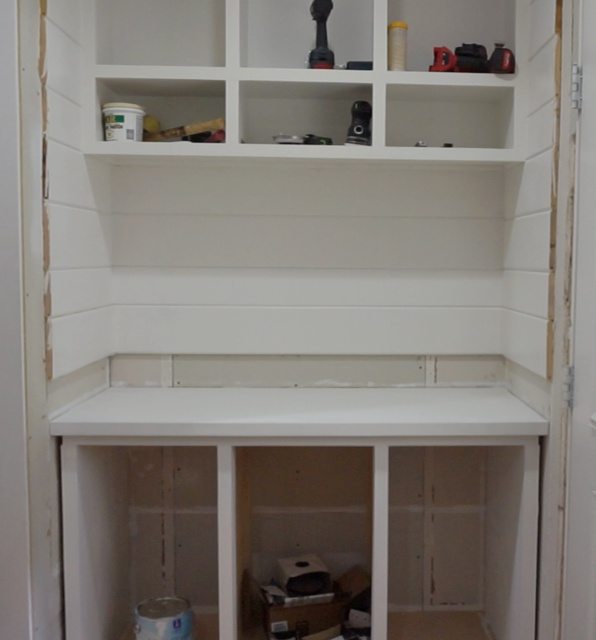
I left the planks on the back wall as that will appear to be the back of my built-in hutch. All the other planks got pulled out. I’m really glad I didn’t use any adhesive when originally installing these!
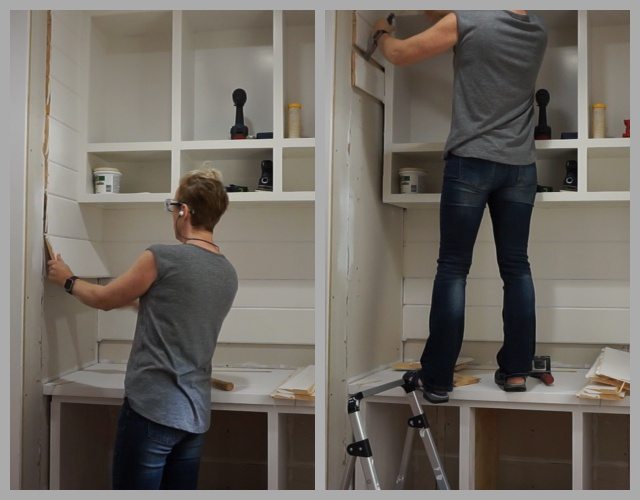
I’d never been quite happy with this decorative header I put in over the new door. I put it there because I needed a logical termination point for the planks I installed. Since I’m tearing out the planks, I don’t need this giant header anymore –so it’s coming out too.

I had to remove more of the door trim to get the header out. It’s all good and well though because it’ll be easier to skim coat with that gone anyway.
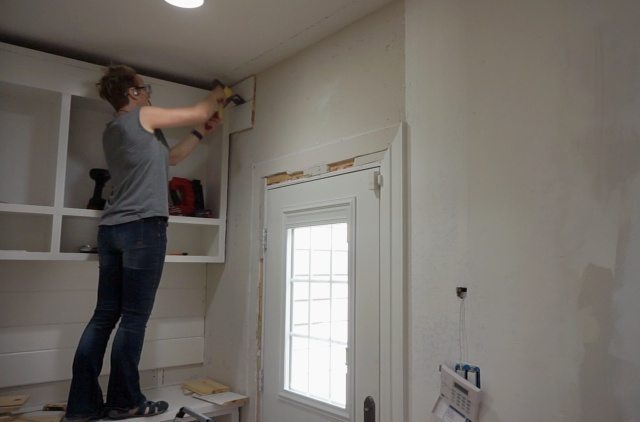
I had removed some of the planks on the back wall in order to build the new, taller cabinet. I now had to replace one of these boards to make the plank wall come down to the countertop. Because of the tongue and groove, I couldn’t get the new board IN without pulling another plank out first (breaking the end in the process).
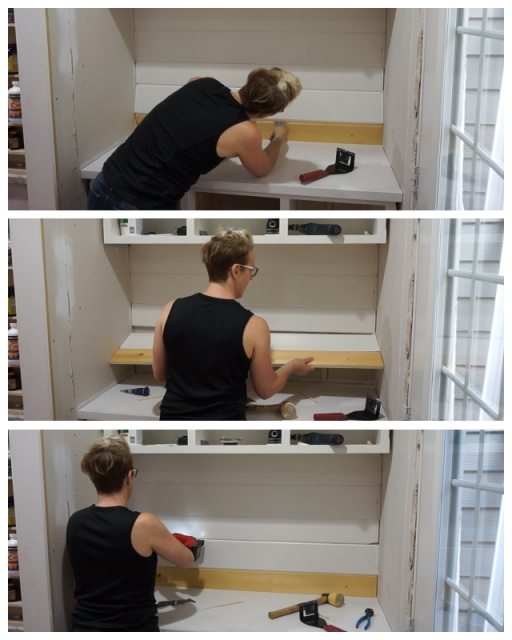
I nailed those two planks in place and glued the broken piece back in. There’s always putty. No biggie.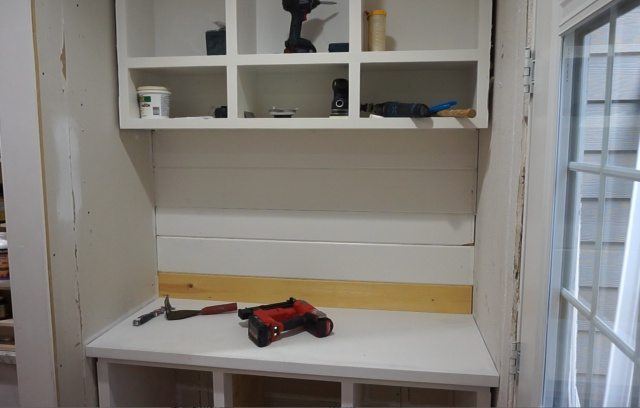
I cut boards that had to be sized exactly — to fit between the upper and lower cabinets. These will be the sides of the hutch. This is a very bassackwardly way to build a built-in hutch but it’s happening!
Creating a Built-in Hutch
But wait. Since I’m making this a drop zone, most likely we will want an outlet here. 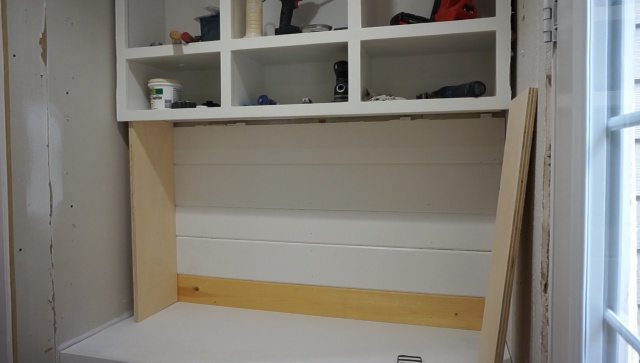
Luckily there is an outlet on the other side of this wall so I can easily tap in and get power to my new hutch. I used a drywall cutting bit on my oscillating tool so I could cut the drywall without nicking the wires that are in the wall.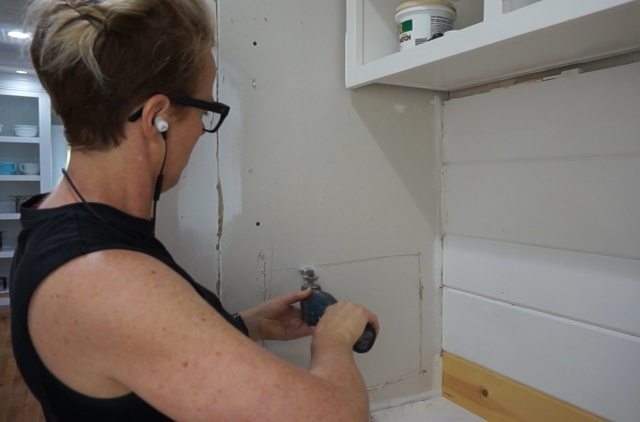
I opened up a large hole to access the existing outlet and determine where my new junction box could go. I had no idea where the wires were running in the wall. Also, notice I cut the drywall out right down the center of the two studs. Makes for easy patching when the time comes.
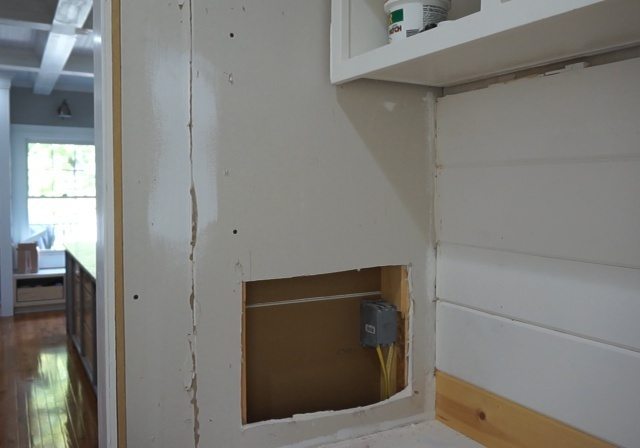
I ran a length of Romex into the existing junction box but didn’t do any wiring at this time.
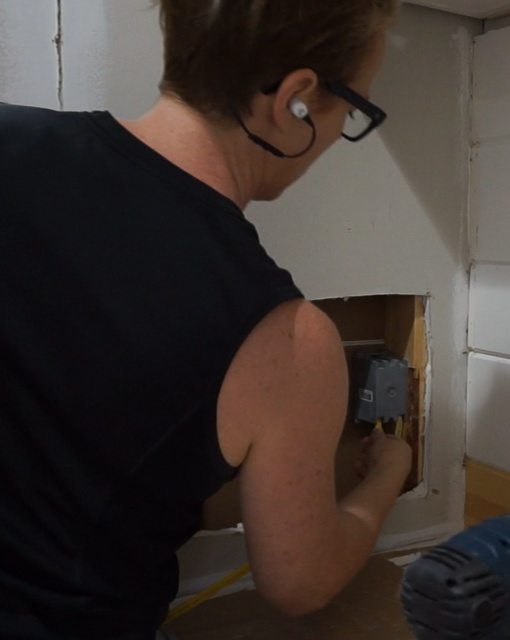
With my new junction box location determined, I replaced the drywall piece I had just cut out. Four screws — one in each corner is all it took because the drywall sat on studs on each side. See how planning your cut can make patching easy? 😉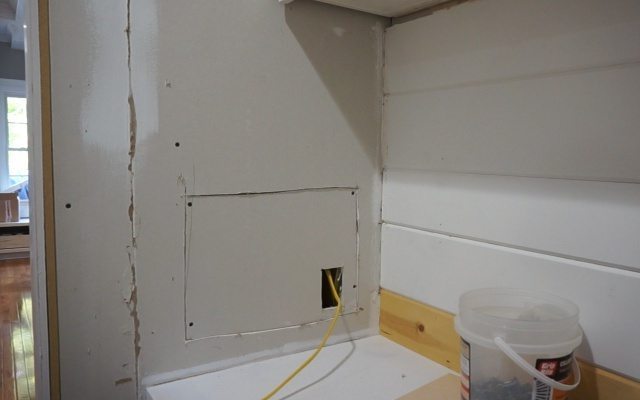
I taped the seams and put on a coat of mud and got back to building my hutch.
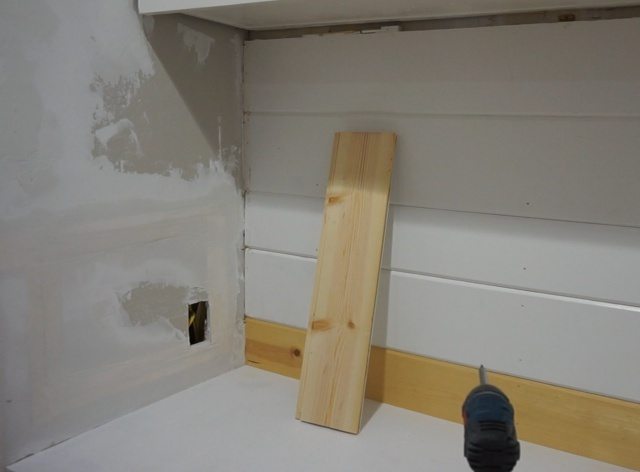
I secured a couple pieces of scrap wood to the wall to sit behind the hutch side because it needs to be pushed in 3/4″ from the wall. 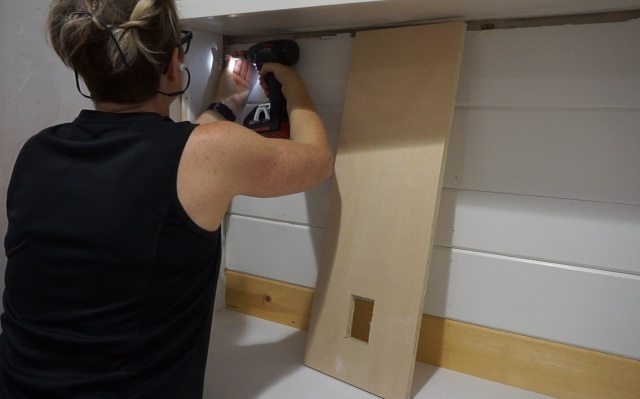
Then I screwed the hutch side to the scrap wood.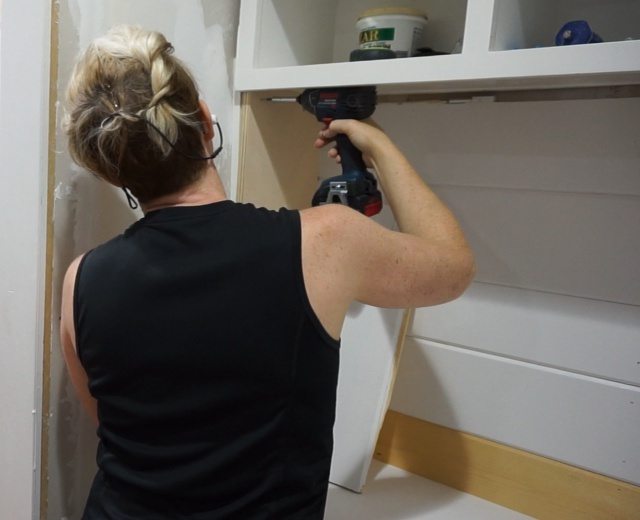
The space on the side (and the scrap wood) will be covered by faceframe.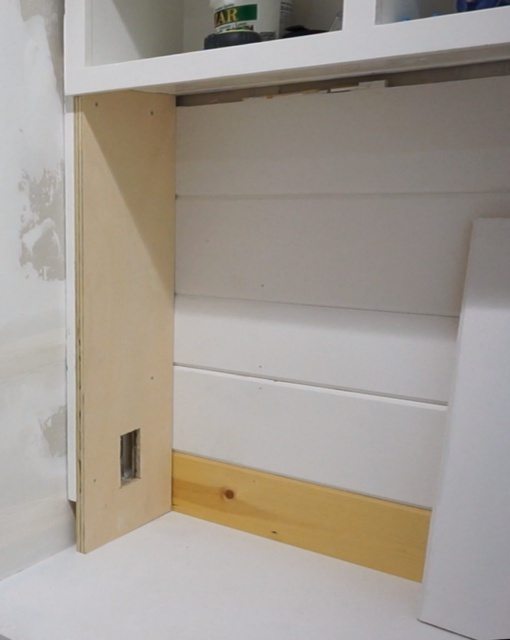
I attached 1×2 faceframe, lining it up with the existing faceframe on the upper cabinets. 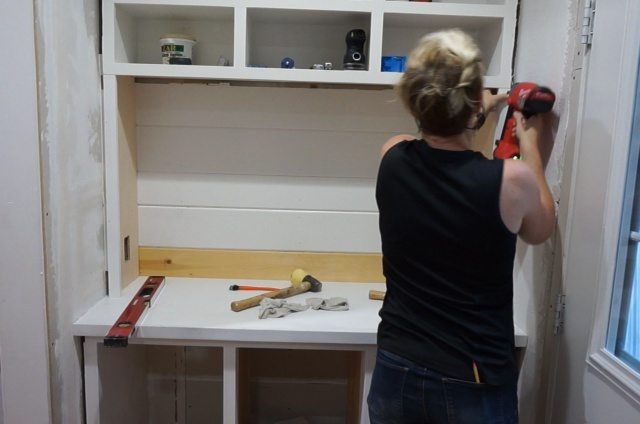
I used a level to make sure this jury rigged faceframe was plumb. There is a wide gap on the outside of the whole faceframe now because I tore out that 3/4″ thick planking. I need to cover that, which could be done in a number of ways.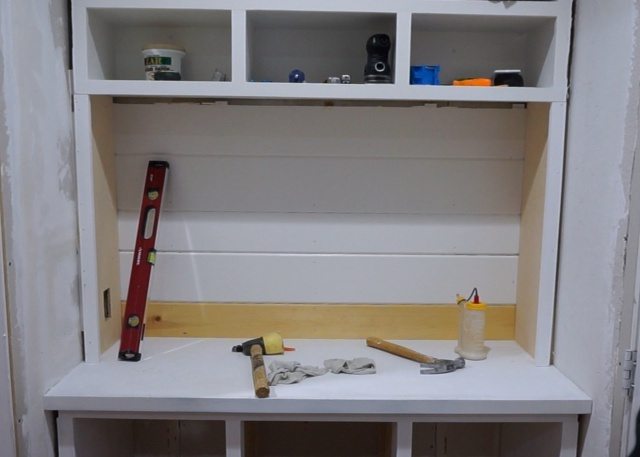
Add an additional 1×2, leaving a 1/2″ reveal of the existing faceframe is how I decided to roll.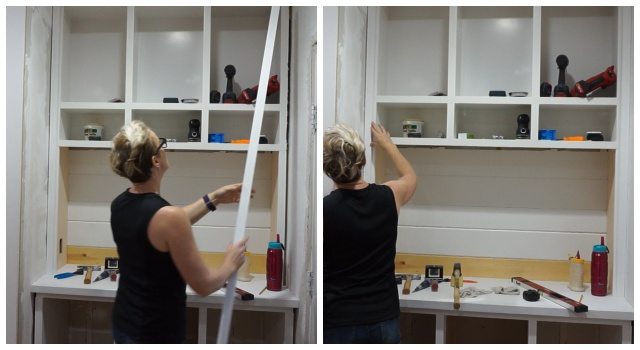
I used a block of wood with a 1/2″ mark to make sure the reveal was consistent and secured the wood with caulk and nails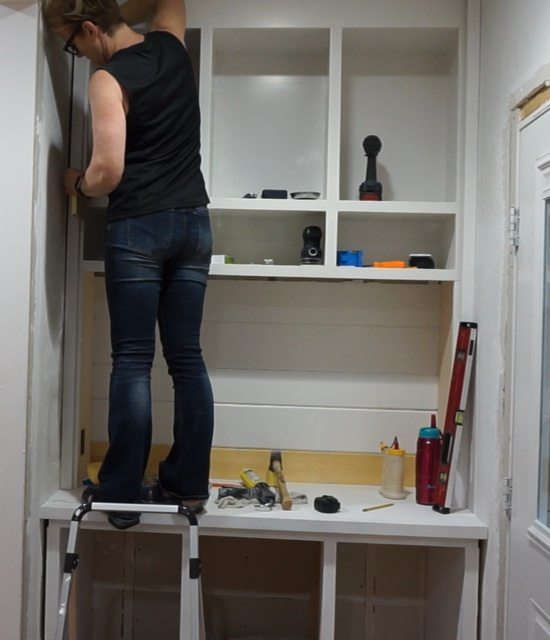
I added this double layer faceframe under the countertop on the bottom cabinets too.
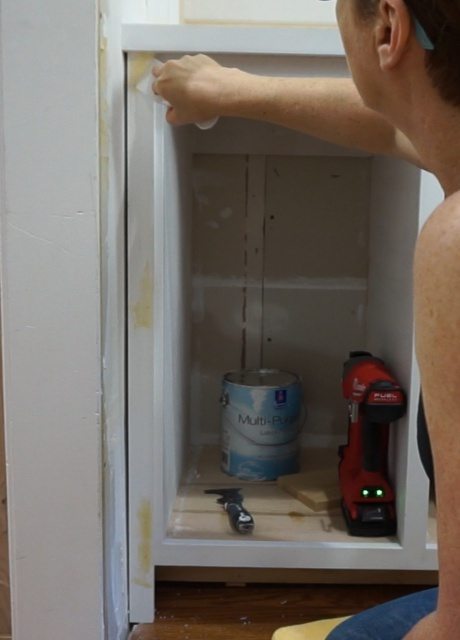
Then I filled all the nail holes, sanded and painted.
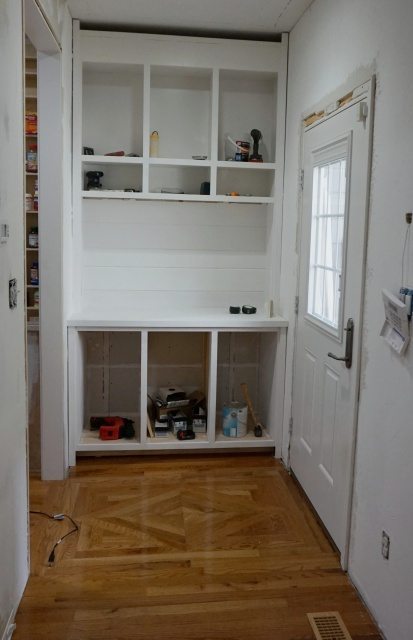
It’s definitely taking me more than one day but I added an electrical outlet and tore out the door headers …so now the “kitchen entry” walls extend down the hall. SO I really have to address the walls in this whole hallway as part of this “Kitchen Entry” makeover.
Next post: Day 4
Start at the beginning: Day 1
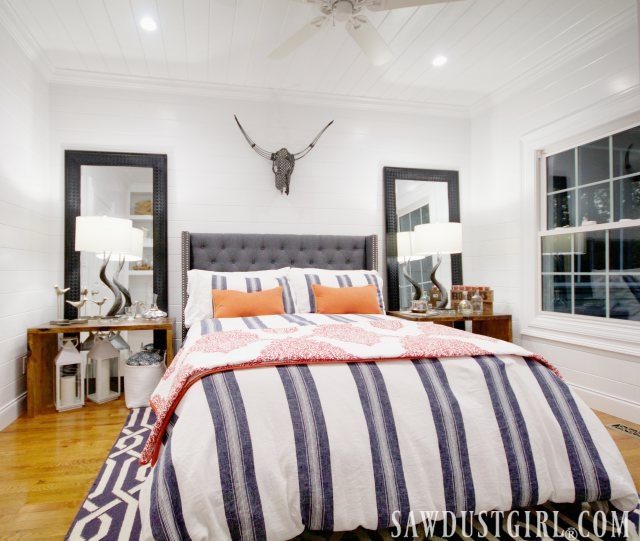
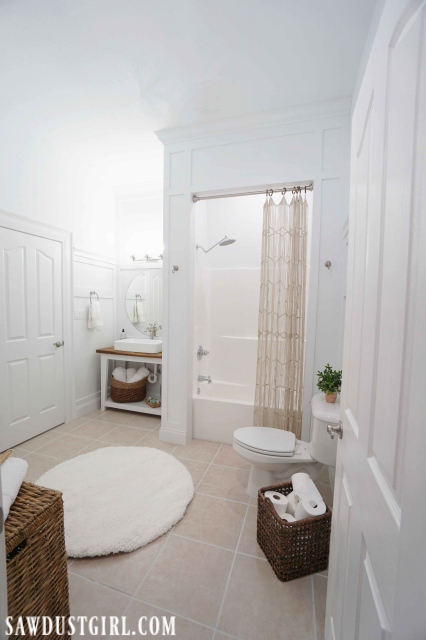




Julie so fun to hear from you! Yes, the bench turned out to be non functional so … Well you know. 🙂
Cool, I like how you’ve changed this, although the bench was nice, you need what functions best for your family.